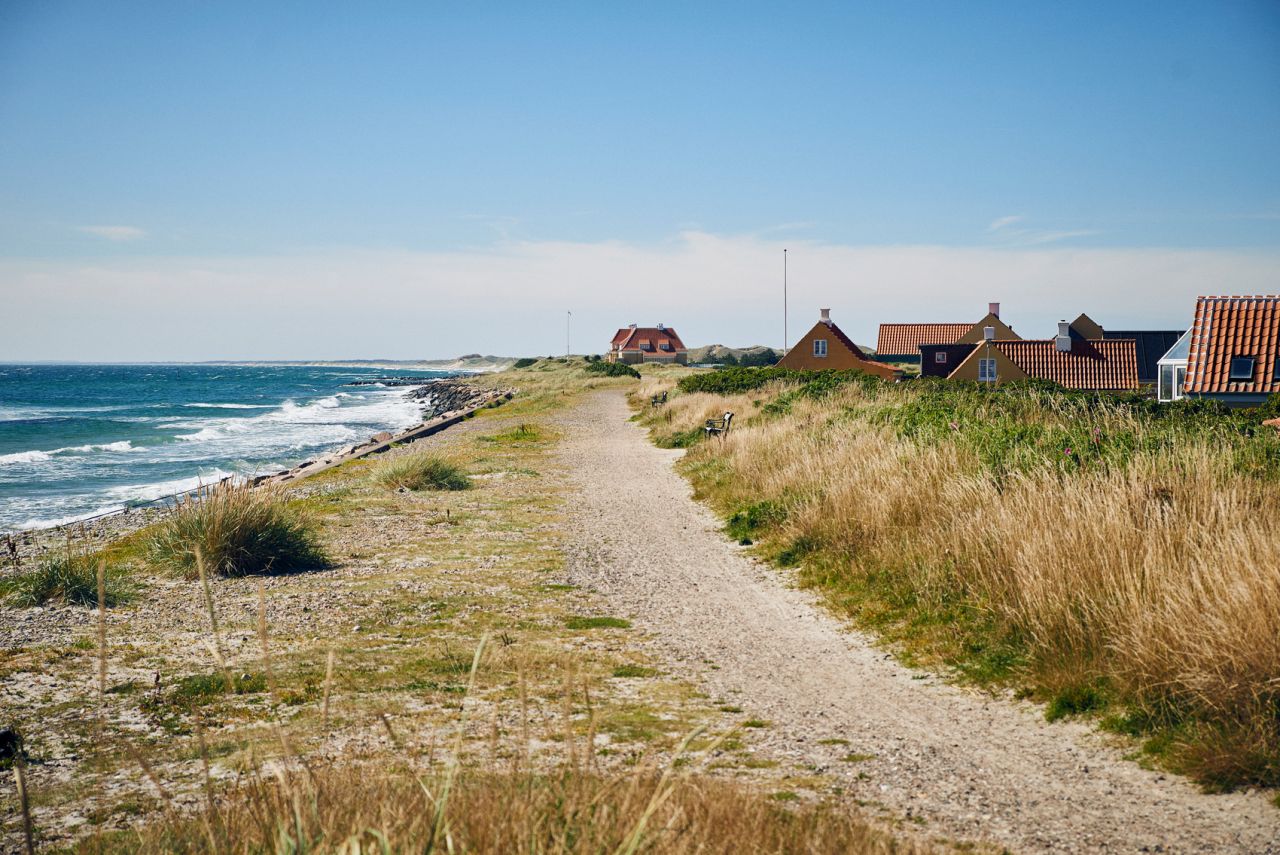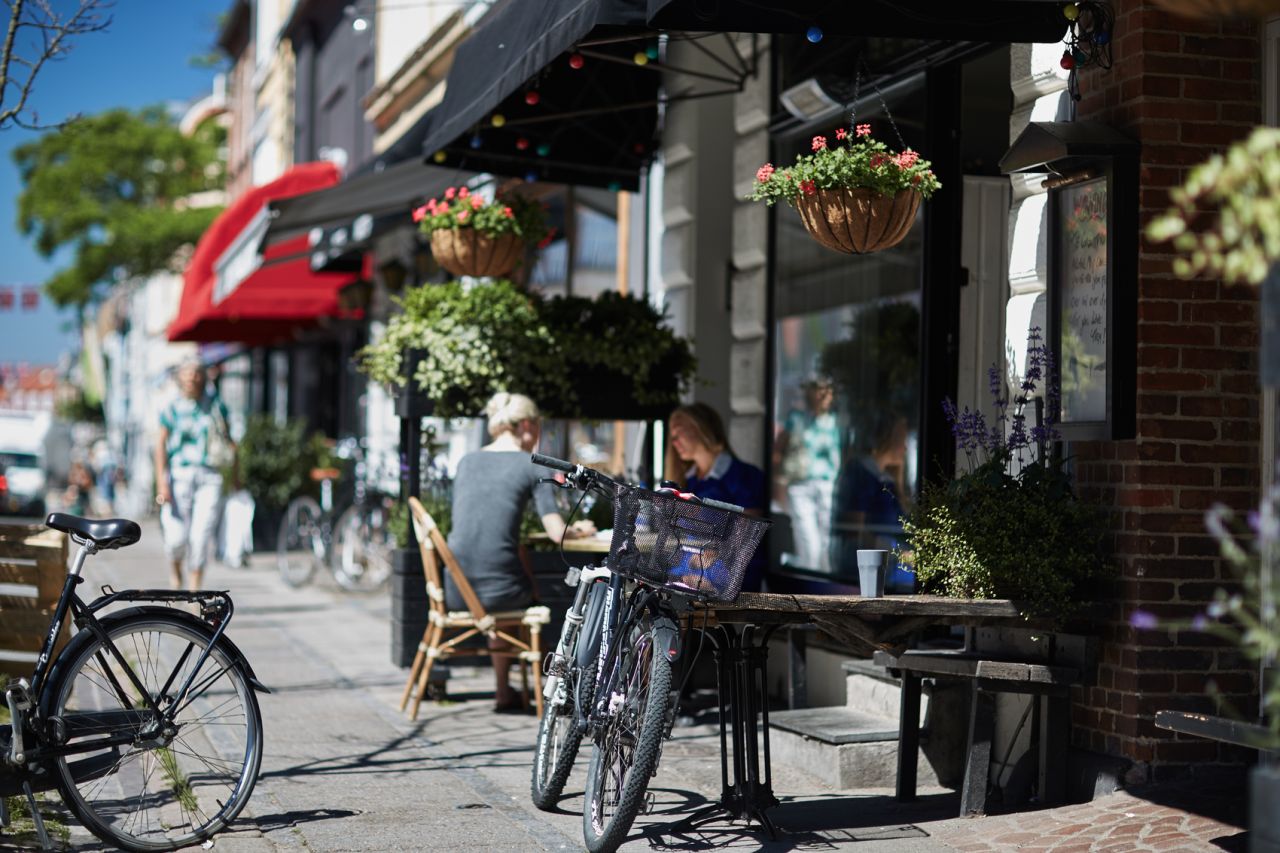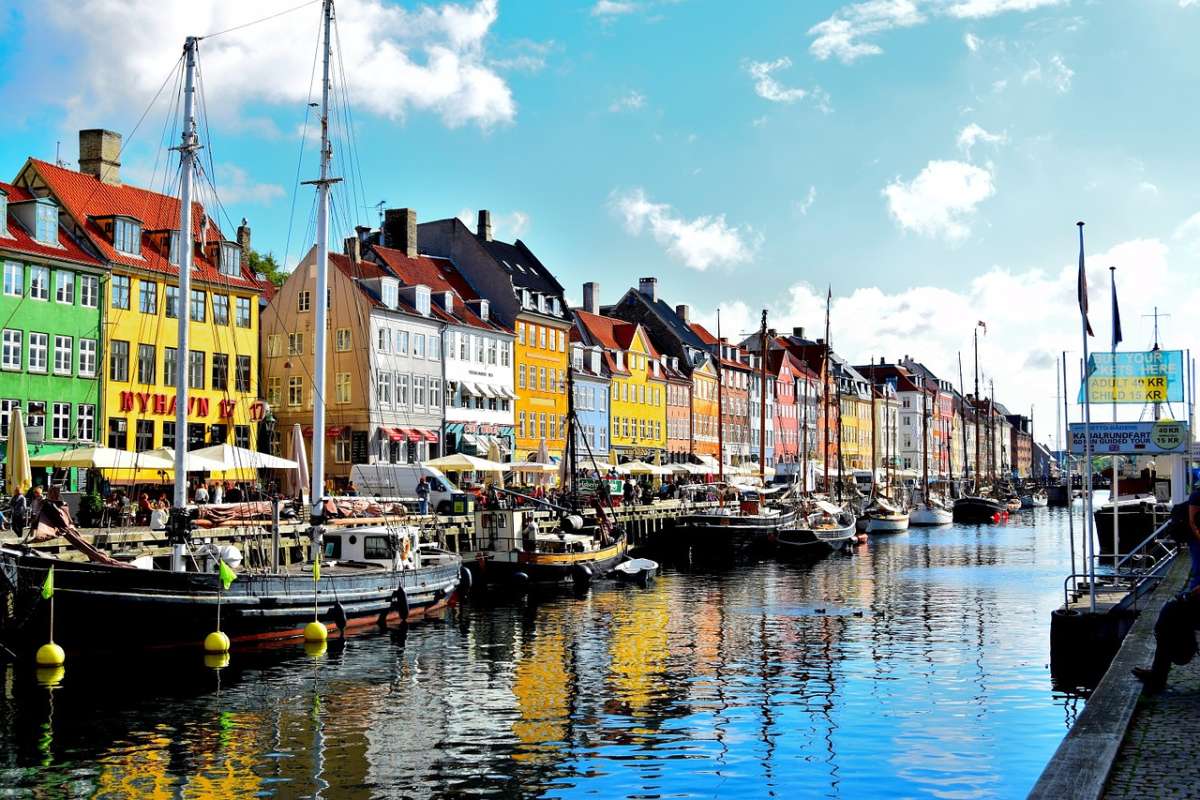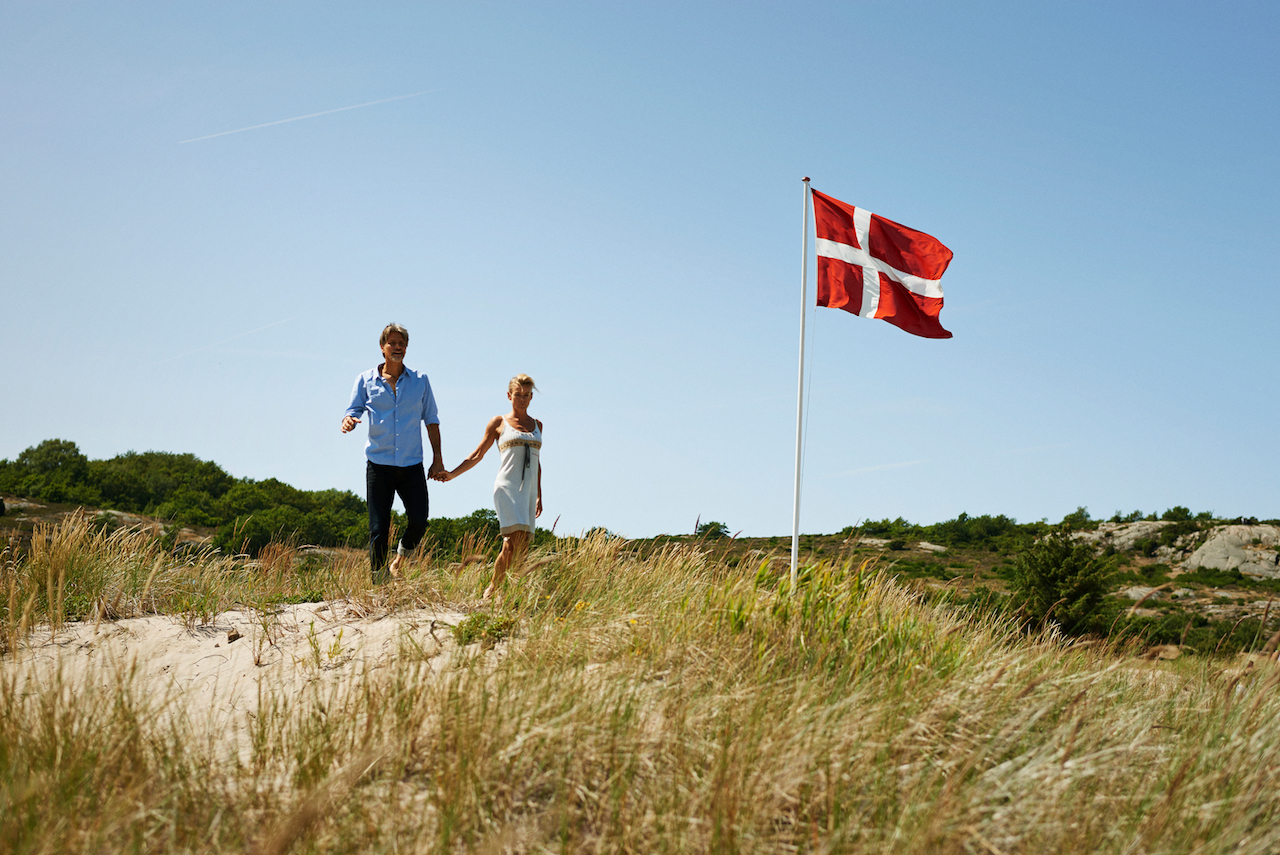Denmark has a land area of approximately 43,000 sq km, most of which is easily accessible by road and as flat as an Alan Carr joke. It’s the cherry on top of Germany and consists of 474 islands.
I drove north through Bronderslev on Motorway E39 to Hjørring, one of the oldest towns in the country and the location of three Middle Age churches: Sct. Catharinæ Church, Sct. Olai Church and Sct. Hans Church.
Jutland has some of the most serene driving tarmac in Scandinavia, from its northernmost town, Skagen, where Kattegat (the waters between Denmark and Sweden) and the Skagerrak (part of the North Sea) meet, to Aalborg, Herning and Ribe in the south, on the German border.

The wind-cracked Skagen coastline (c) Niclas Jessen/VisitDenmark
Hjørring tois under an hours drive, north-east along the wind-cracked coastline of Frederikshavn, where ferries connect to Gothenburg and Oslo.
There’s a beach this far north and the North Sea laps in, fizzing on the sand. A beach level on the map with Glasgow! with one-hundred palm trees on the sandy stretch of Frederikshavn Kommune, planted by the local municipality in order to, presumably, confuse lost sailors. Small dinghies bob up-and-down on the aluminium ocean and the wind whistles through the car window.
Skagen is dotted with colourful houses, the painted yellow brick set against a cloudless sky of pale blue. The paint is a symbol of wealth, having started in the 19th century with the use of ochre transported from France. Artists like P. S. Krøyer and Holger Drachmann travelled to Skagen to paint the blasted, wind-torn scenery and Hans Christian Andersen holidayed there, when he wasn’t thinking about mermaids.
From the tip of Denmark and the Skagerrak the drive back to Aalborg via the E39 and through Norresundby – over the Limfjordsbroen Bridge – takes an hour (going fast – the motorway speed limit is 81 mph). The university city is the fourth most populous in Denmark and was a strategically important harbour during the Middle Ages. The Viking burial site Lindholm Høje on the city’s perimeter is worth visiting.

Cosy cafes line narrow streets (c) Photopop/VisitAarhus
The E45 darts south through Denmark’s second largest city, Aarhus, with the principal port on the east-side of the peninsula. I weave through tight streets of cozy cafés and can see in the distance Aarhus Cathedral, the tallest and longest cathedral in Denmark, dedicated to the patron saint of sailors, St. Clemens.
You can drive the craggy-edged circumference from Aarhus to Horsens into Vejle County, or continue on the E45, then the 501, inland, through quiet countryside and more fields of despondent cattle.
South of Vejle County, Fredericia connects to the island of Funen via the Østjyske Motorvej Bridge, and the E45 becomes the E20; leading you to Odense, Denmark’s third largest city. By way of the Funish Motorway (Fynske Motorvej), the E20 links Funen to the island of Zealand. A great expanse of rolled-out tarmac is almost uninterrupted by transport and finishes at Nyborg, where a bridge across the Great Belt, takes me to Copenhagen.

Copenhagen, Nyhavn District (c) pixabay/skeeze
Driving in Copenhagen is not the same as driving in Denmark. Copenhagen has a claustrophobia of cars, designed around cycle paths, where CYCLISTS HAVE RIGHT OF WAY, it’s a city for two wheels, like Amsterdam — but with better restaurants. It’s where NOMA is and Thomas Herman’s Nimb; and Døp hotdog stall, voted by Danes as Copenhagen’s favourite eatery.
In the north of Zealand is Elsinore, the closest city to Sweeden and a 40 min drive along the coastline of the Sound (the narrow gateway to the Baltic) from Copenhagen; and home to Kronborg Castle, as immortalised in Hamlet.
You may also like to read: 24 Hours in Copenhagen, Denmark


